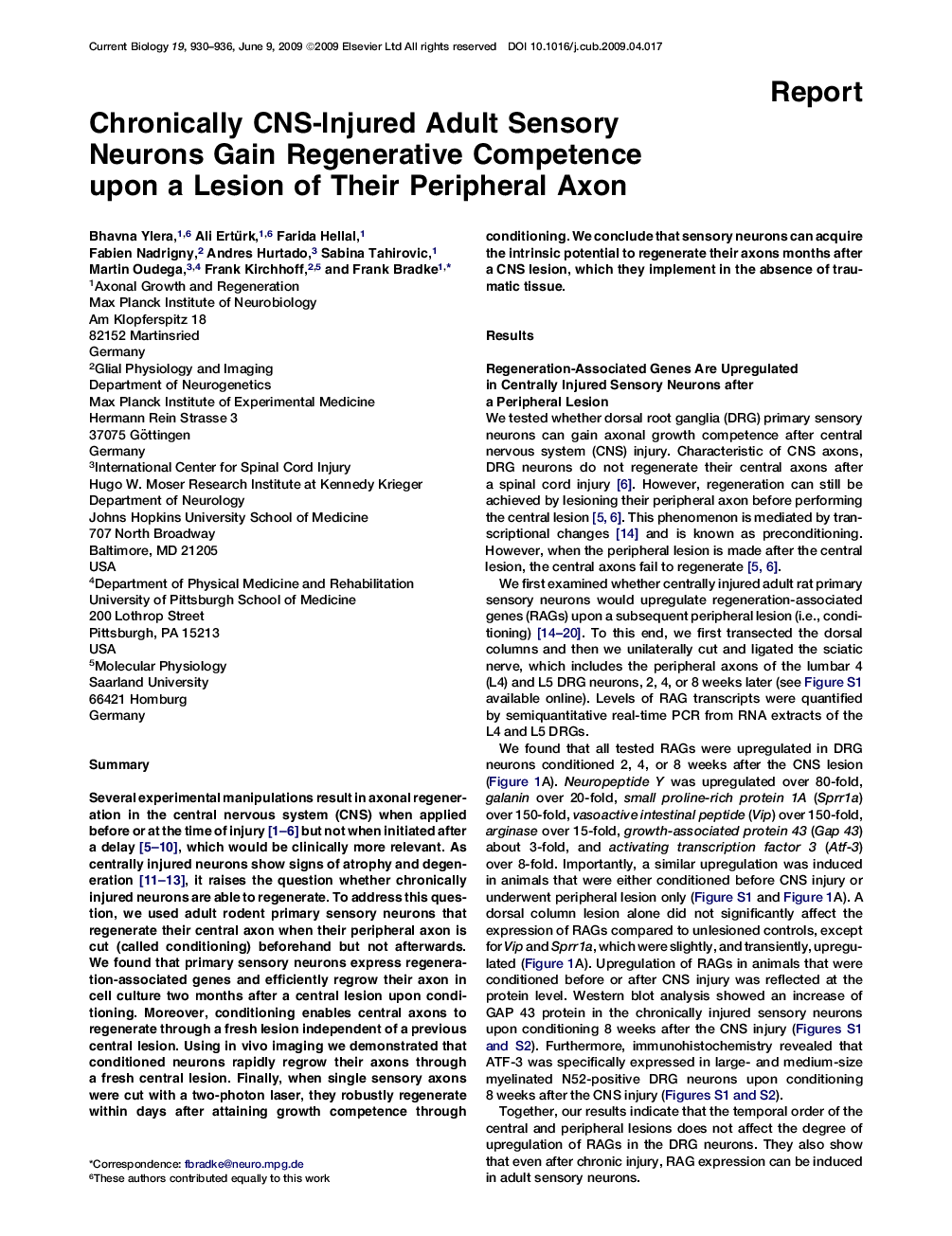| کد مقاله | کد نشریه | سال انتشار | مقاله انگلیسی | نسخه تمام متن |
|---|---|---|---|---|
| 2043502 | 1073363 | 2009 | 7 صفحه PDF | دانلود رایگان |

SummarySeveral experimental manipulations result in axonal regeneration in the central nervous system (CNS) when applied before or at the time of injury 1, 2, 3, 4, 5 and 6 but not when initiated after a delay 5, 6, 7, 8, 9 and 10, which would be clinically more relevant. As centrally injured neurons show signs of atrophy and degeneration 11, 12 and 13, it raises the question whether chronically injured neurons are able to regenerate. To address this question, we used adult rodent primary sensory neurons that regenerate their central axon when their peripheral axon is cut (called conditioning) beforehand but not afterwards. We found that primary sensory neurons express regeneration-associated genes and efficiently regrow their axon in cell culture two months after a central lesion upon conditioning. Moreover, conditioning enables central axons to regenerate through a fresh lesion independent of a previous central lesion. Using in vivo imaging we demonstrated that conditioned neurons rapidly regrow their axons through a fresh central lesion. Finally, when single sensory axons were cut with a two-photon laser, they robustly regenerate within days after attaining growth competence through conditioning. We conclude that sensory neurons can acquire the intrinsic potential to regenerate their axons months after a CNS lesion, which they implement in the absence of traumatic tissue.
Journal: - Volume 19, Issue 11, 9 June 2009, Pages 930–936